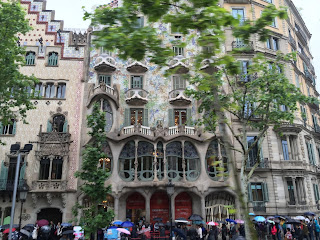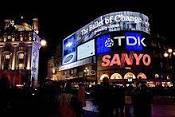#travel #traveltips #travia #travelingcynthia #kingtut
Friday, May 19, 2017
Tuesday, May 16, 2017
Cruising the Mediterranean
by Cynthia Dial as seen in TravelSquire.com
It’s
not that high
I tell myself after committing to be the first to climb a rope ladder to the crow’s
nest of a tall sailing ship – my home on water for a week. Not one to break my
word (at least not with so many witnesses), I’m secured into a safety harness, place
one footstep above another in my steady ascension of the ship’s mast and am
pulled up onto a wooden platform to be greeted by an unparalleled reward – a
360-degree bird’s eye view of the Mediterranean Sea from atop the Star Flyer.
A member of the Star Clippers’ fleet, the
Star Flyer is one of this family of three (soon to be four) of the world’s
largest and tallest sailing vessels. Back-in-the-day-style boats equipped with
21st century yacht-like lures, the fleet’s inception began as a love
affair between Swedish owner and lifetime yachtsman, Mikael Krafft, and the
classic sailing clipper ships that reigned the waves throughout the 1800s. In
the book Star Clipper Saga, he
explains: “In 1987 I decided to build a genuine large sailing ship with the
wind as the most important source of power. No one had ever done that for almost
a hundred years. The ship should resemble old clippers in hull, yet be designed
to accommodate some 150 guests. In my new clipper, I wanted to include all the
romance of sail and style that you find in a large sailing yacht.”
Four years later in 1991 his dream became
a reality with the introduction of the Star Flyer (175 passengers/74 crew/16
sails). A year later its sister ship, Star Clipper, entered the scene. In 2000
five-masted, full rigger Royal Clipper (227 passengers/106 crew/42 sails) set
sail; and debuting late 2017 is the Flying Clipper (300 passengers/140 crew/35
sails).
As a sailing ship, the rules are different
but the experiences are exceptional – so with wind in my hair and a salty
breeze in my face, I dive in. Unlike most cruises, Star Flyer has an open
bridge policy. Serving up the opportunity to observe the captain and crew at
work -- from charting the courses to maneuvering the controls – the only
restriction is to request permission to enter. Then there’s lying in the
bowsprit’s trapeze-like netting suspended mere feet above the water as the ship
skims the waves toward its next port (color me jealous when a previous
passenger recounts her bowsprit venture alongside a pod of dolphins).
Even port departures deliver dramatic
memories. With all hands on deck and all passengers on board, sheets flap and sails
unfurl as they scale the ship’s four masts to the background music of Vangelis,
1492: Conquest of Paradise – and the Star Flyer sets sail.
Departing from Barcelona, anticipation is high
for our upcoming week at sea and visits to such Mediterranean magnets as Palma
and Mahon, Spain, Bonifacio and Calvi on the French island of Corsica and
finally St-Tropez. At embarkation, there’s live music – it’s Peter (Slovakia) on
the keyboard playing Beyond the Sea. As
cruise director Steffi (Germany) says, “A ship without music is impossible.” Our
welcome aboard drink, named Bon Voyage (each day features its own bar
specialty), is liberally served as Captain Mariusz Szalek (Poland) greets all
who step onto the high-gloss deck of the ship’s al fresco Tropical Bar. One
word describes the atmosphere: addictive.
During initial exploration of the intimate
ship, I discover a cozy library, a beckoning piano bar and several salt water
pools (all fleet-wide standards). Reflective of Star Clippers’ rich maritime
heritage, the décor is nautical – antique-like fabrics, artwork of famous
sailing vessels, expansive teak decks, gleaming mahogany railing and polished
brass appointments. Yet, regardless of the comfortable amenities typically
found on traditional ships, each of the Star Clippers’ fleet is also small
enough to visit off-the-beaten-path, inaccessible-to-larger-liner ports; and
intimate enough for guests to readily know one another.
Passengers and sailors Jan and Mike
English, Princeton, Illinois, transfer their affection for sailing their
33-foot boat on Lake Michigan in their downtime to sailing with the Star Flyer
during vacation time. They additionally appreciate the vessel’s comparatively diminutive
size (175 passengers) in contrast to today’s ships carrying thousands of guests.
“Mike would never cruise on a mega-liner,” says Jan. “We prefer ships with 200
passengers or less and love making friends from all over the world.”
In agreement are the English’s newly-acquired
friends, Louise and Rafi Glaser, Sydney, Australia. Veterans of 25 cruises,
including a 3,500-passenger ship, Rafi says of the experience: “We didn’t like
it. To me, it’s the informal, intimate ease of the Star Flyer that I most
enjoy.”
With no casino, no musical revues and no
rigid schedule – only the reward of unconstrained time to do nothing or to
sample everything – here are some low-key, Star Flyer-style options: learning
the art of napkin folding from the wait staff, the secret to cocktail mixing
with the bartender and the skill of knot-tying with a deck cadet. For on-deck
participatory types, there’s pulling the lines and hoisting the sails; and if
it’s a beach day, activities range from swimming and windsurfing to waterskiing,
kayaking and snorkeling. With casual elegance as the dress code (no formal gowns
or black-ties required) – even packing seems a timesaver.
“This is a sailing ship, so I know you want
to sail,” announces Captain Szalek during his first-day introduction. “You can
trust that as much as we can, we will be sailing.” His explanation as to why
the Star Flyer is sometimes under power: “There’s no bad wind – there’s either
no wind or there’s wind – all you need is time,” which for a ship with a set
itinerary can sometimes be a limited commodity.
That said, here’s the line-up of ports and
each stops’ prime perks:
Barcelona – A city of matchless magnets,
from Antoni Gaudi to Pablo Picasso, and such quirky draws as a shoe museum and
a chocolate museum, Barcelona has something for everyone. The Picasso Museum
features the country’s best collection of the artist’s masterpieces and
handiworks of the famous architect, Gaudi, are equally plentiful.
They include Sagrada Familia (called “a
church in progress” because though he worked on it from 1883 until his 1926
death, it remains incomplete); Casa Milà, once described as “the famous
melting-ice-cream creation,” and Casa Batlió, which is known for its almost
exclusively curved construction. All define the superlative of creativity and
all are lavishly adorned. After viewing his creations, it seems inconceivable
that the word ‘gaudy’ isn’t derived from the architect’s surname (though there
is no connection).
Las Ramblas, one of Europe’s most famous
streets, is one of Barcelona’s best known tourist haunts. A lively tree-lined
pedestrian walkway with distractions at every intersection, one delicious
detour is La Boqueria Market to sample the local food and drink.
Tip: Observe (or better yet, participate
in) one of this Catalan region’s most characteristic traditions – the Sardana
dance. Forming a circle, participants hold hands, raise their arms in slow
motion (think Zorba the Greek) and
sway to the music for one to two hours.
Palma de Mallorca – Known for its old town’s
meandering alleyways that are punctuated with busy plazas, old aristocratic
mansions, horse-drawn carriage rides, cafes and coffee shops, it is also the home
of its famous namesake pearl.
Sightseeing should include the Cathedral, Spain’s
second largest Gothic church, and its hillside Bellver Castle – if for nothing else than its views.
Tip: Explore and enjoy Palma by imbibing
its food and drink scene – from paella and sangria to hot chocolate and
ensaimada crema (a spiral-shape Mallorcan pastry with a rich cream cheese
filling).
Mahón – Its colorful history – an 80-year
British occupation – remains reflective today, whether it’s the capital city’s
four-story Georgian townhouses, its citizens’ affinity for gin or its English-speaking
residents. From port, a steep walk up several flights of steps is necessary to
reach the town center; but the reward of this StairMaster-like effort is a panorama
of this island of Minorca.
Tip: Take home a piece of Mahón – it’s
known for leather goods (particularly its own distinct style of shoes), local
cheeses, gin and wine.
Bonifacio – To reach the town, it is
necessary to sail between two stony promontories on Southern Corsica. Just as
in olden times, it is a demonstration of seamanship that excludes many larger
cruise ships. Comprised of an upper town and lower town, each has its own
character. Two gates mark the entrance into the upper town’s medieval village –
a network of narrow cobbled streets, charming squares and intimate eateries. Lower town sits by the marina and features a
trendier scene, complete with cafes and boutiques.
Tip: For a less-than-three-euro
investment, walk the Escalier du Roi d’Aragon (King Aragon Steps) – a staircase
cut into the stone, perched over the sea and hugging the cliff. Consisting of
187 steep steps, legend says it was originally carved by soldiers overnight
during the siege of 1420. Regardless of its origins, its prize is a priceless
view of the Mediterranean.
Calvi – One of Corsica’s most northern
points, it too has an upper and lower town. The upper town centers around its
ancient citadel, and its lower town is replete with cafes, boutiques and a
seaside promenade. However, Calvi is also known for its surrounding hills
covered with olive, citrus and fig trees. A popular side trip, by taxi or even
motor scooter, is to the ancient village of Sant’Antonino. One of the island’s
oldest inhabited towns and named one of France’s “most beautiful villages,” perched
on a small mountaintop, it is visible for miles.
Tip: Grab a beachside table at one of the
many restaurants alongside the lower town’s harbor for prime people watching
and delicious downtime.
St-Tropez – Of this tony town’s reputation
for over-the-top opulence, it’s been said: “If you came here for history or
quaintness, you caught the wrong yacht.” Founded by artists, it wasn’t until
Brigitte Bardot’s 1956 film, “And God Created Woman” that it became synonymous
with the Riviera’s glamour. Though its populace is 5,700 year-round residents,
each summer translates to a deluge of 100,000-plus daily visitors. This is the
scene: pastel tinted houses, boutiques with such names as Brigitte B and
Vintage Tiffany and bling everywhere.
Tip: To get the feel of the residents’
St-Tropez, head to the town’s central park, Place des Lices, and observe a
serious game of boules every day or the popular flea market on Tuesdays and
Saturdays.
Photos by Cynthia Dial
Bottom line: Though not your standard
cruise ship, Star Flyer is loaded with crossover appeal – for typical travelers, it’s distinctive; for
seasoned sailors, it’s comfortable and for eternal explorers, it’s the epitome.
800-442-0551
#travel #traveltuesday #travelingcynthia #traveltips #mediterraneancruise #cruising
Tuesday, May 2, 2017
Travia: London's Piccadilly Circus
The world-famous lights at Piccadilly Circus in London
will remain switched off for the longest period of time since the Second World
War.
Photo by Cynthia Dial
On Monday, this week, the lights on the six billboards
went dark as the property company that owns the popular tourist site plans to
replace them with a state-of-the-art single digital screen. According to the
owner, Land Securities, the approximately 8,500-square-foot screen will be the
largest in Europe and will retain the curved shape and patchwork appearance of
the current lights.
The lights will go back on in the fall when they will be
linked with high-speed Wi-Fi network where it will display the live-stream events
from across the globe.
#TravelTuesday #travel #traveltips #travelingcynthia #london #travia #piccadillycircus
Subscribe to:
Comments (Atom)

















